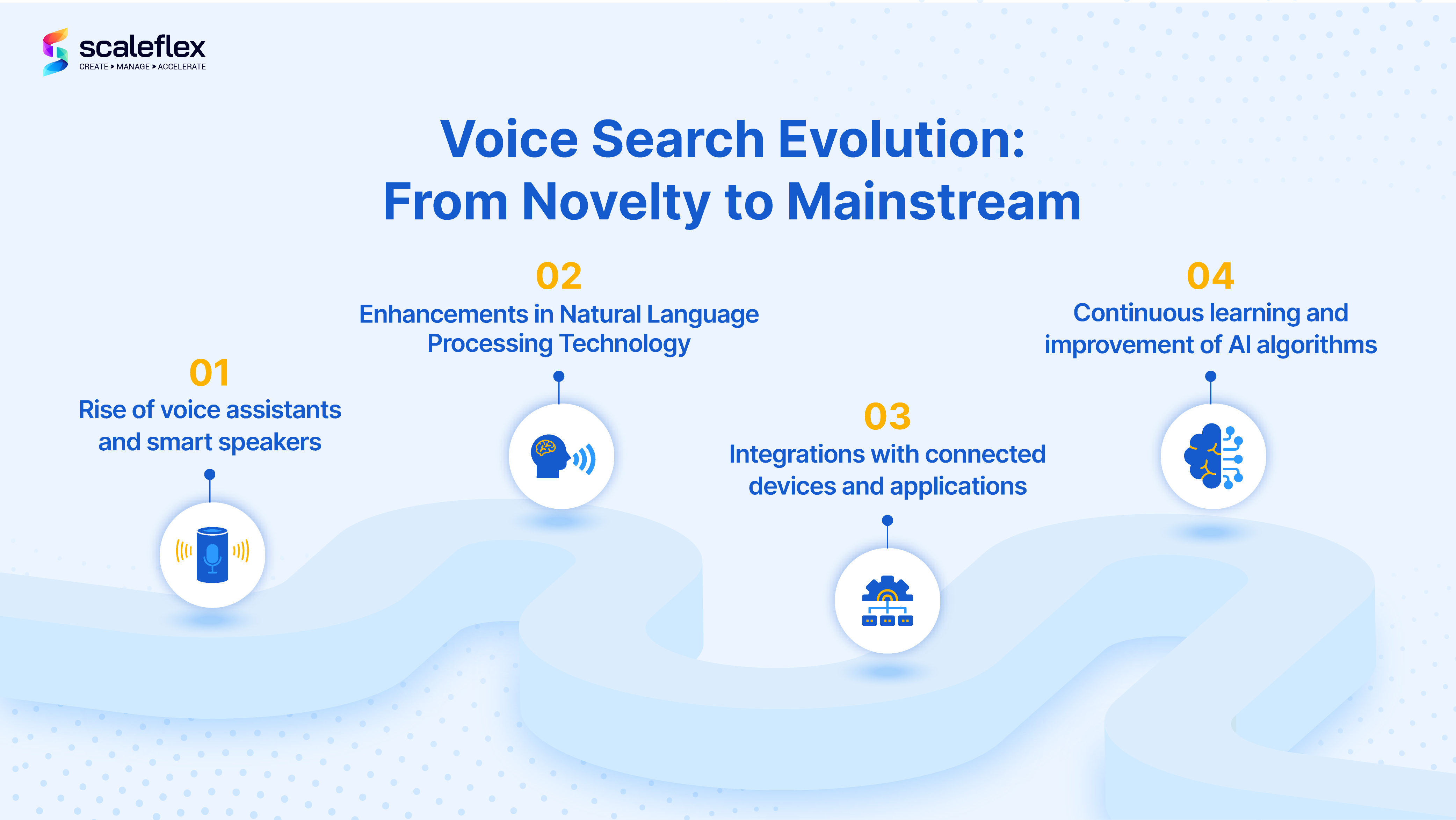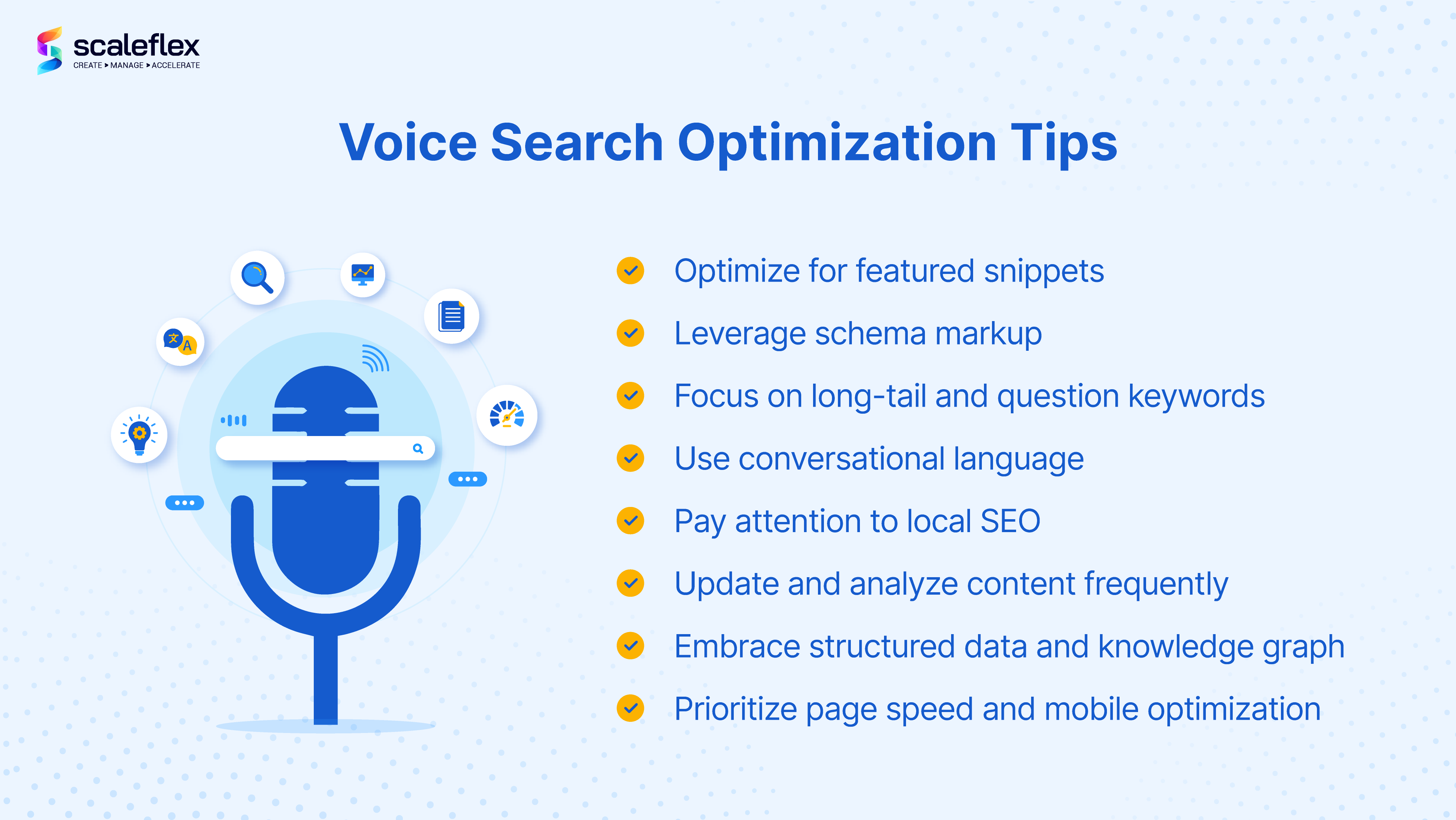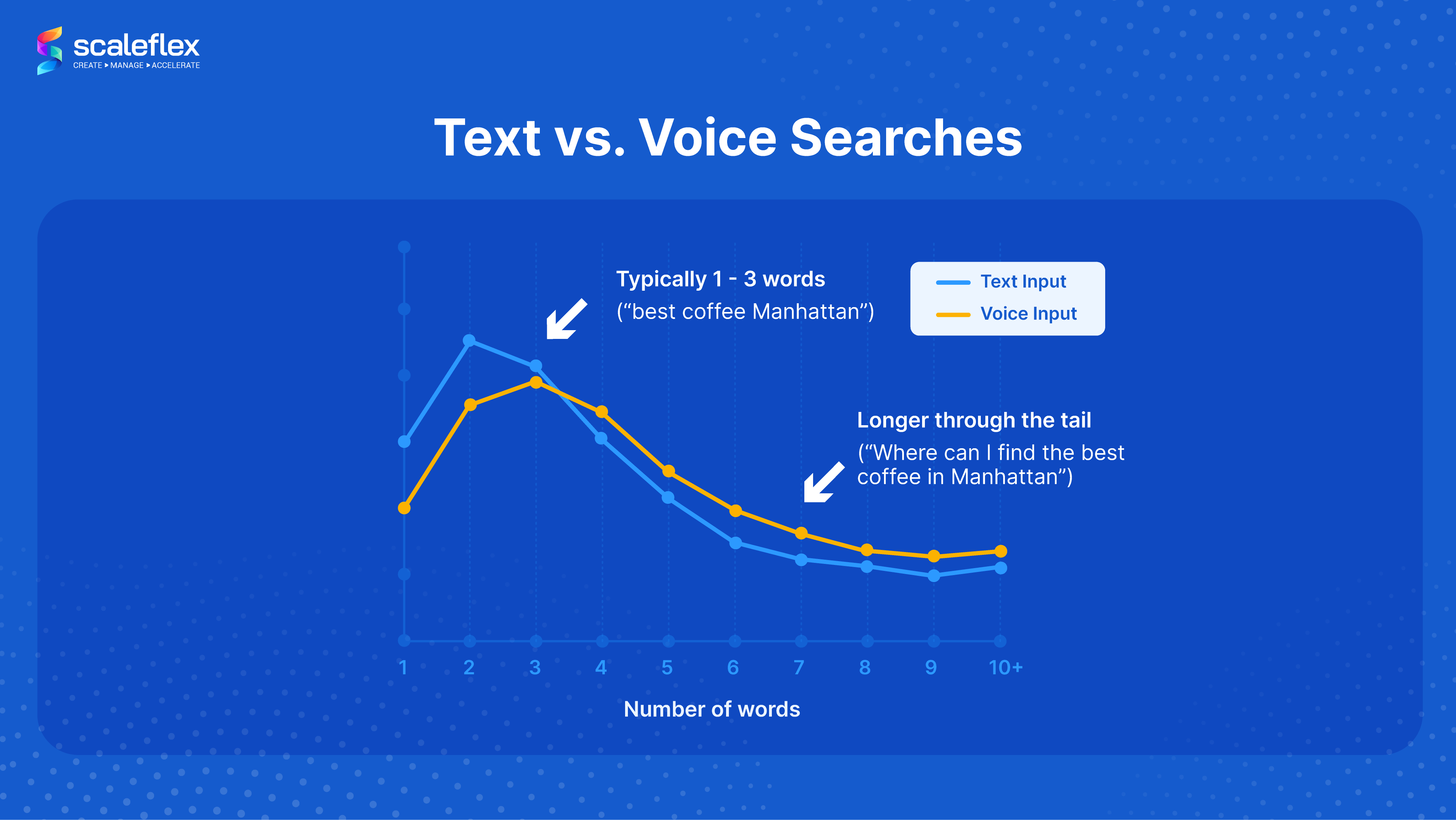Why Voice Search Optimization Should be Your Priority in SEO
The way people search for information online is rapidly evolving. Voice search has emerged as a game-changer, with 27% of the global population and 50% of the US population using voice search features.
Want to find the nearest convenience store for a quick drink stop during your run on a new jogging route? Instead of whipping out your phone, you can now “talk” to your smartwatches to search.
With the rise of virtual assistants like Siri, Alexa, and Google Assistant, users increasingly turn to voice commands to find what they need. As a result, optimizing your website and content for voice search is no longer a luxury but an SEO necessity.
In this dynamic landscape, staying ahead of the curve is crucial. Our blog post will delve into the reasons why voice search optimization should be at the forefront of your SEO strategy in 2023 and beyond. We'll cover the insights, statistics, and trends that demonstrate the growing influence of voice search on online consumer behavior.
But it is not just about the "why." We will also provide actionable tips and strategies to optimize your website and content for voice search. From understanding the nuances of conversational queries to adapting your keyword research and content creation approach, we will guide you through the steps needed to achieve voice search success.
What is voice search?
What is voice search? Voice search is the use of spoken language to interact with search engines and other voice-enabled devices. Instead of typing queries into a search bar, users can express their questions and do a speech search while voice assistants, powered by artificial intelligence (AI), process and respond to the spoken input. Voice search allows a more natural and hands-free approach to accessing information, performing tasks, and controlling devices.
It relies on automatic speech recognition, natural language processing, and search engine integration to understand user queries and deliver relevant results audibly or visually. As voice-enabled devices become increasingly prevalent, voice search transforms how we search for information, access services, and engage with technology.
The Evolution of Voice Search
Voice search has come a long way since its inception, transforming from a novelty feature to a mainstream method of accessing information. Now, it has even evolved into a more intelligent and sophisticated tool. Thanks to advancements in artificial intelligence (AI) and machine learning, voice search is becoming smarter than ever, providing users with more accurate and contextually relevant results.

Rise of voice assistants and smart speakers
The introduction of voice assistants marked the initial wave of voice search adoption. These virtual assistants provided users with hands-free and convenient ways to interact with technology, paving the way for voice search to gain traction.
Simultaneously, the advent of smart speakers, such as Amazon Echo and Google Home, brought voice search into the homes of millions. The seamless integration of voice assistants with these devices made voice search a part of everyday life for many users.
Enhancements in Natural Language Processing (NLP) technology
One of the key factors behind the increased intelligence of voice search is the improvement in Natural Language Processing (NLP) algorithms. NLP allows voice assistants to understand human language more effectively, including nuances, context, and intent. This enables voice search systems to interpret queries more sophisticatedly and provide more precise answers.
With the integration of advanced NLP techniques, voice search can now comprehend complex sentence structures, conversational queries, and even contextual references. This enhancement enables a more natural and fluid interaction with voice assistants, making voice search an increasingly intuitive and user-friendly experience.
Integrations with connected devices and applications
The proliferation of smartphones and wearable devices further propelled the growth of voice search. With voice assistants integrated into mobile operating systems and wearable gadgets, users now gained the ability to conduct hands-free searches on the go. This convenience and speed offered made voice searches a preferred method for obtaining quick information, such as directions, weather updates, and answers to general queries.
Beyond smartphones and smart devices, voice search has also made its way into more homes than ever before, with numerous smart home automation devices and connected technologies. From controlling home appliances and entertainment systems to accessing the information on smart TVs and cars, voice search has become an integral part of the connected ecosystem. In fact, the number of voice assistants in use is projected to reach 8.4 billion by 2024.

This doesn't just end with devices but also applications and services. Voice assistants don't just work in silos anymore. They can interact with various applications, allowing users to perform specific tasks, access content, and control smart devices through voice commands.
This integration opens up endless possibilities - you can book a ride, order food and check the latest news without even touching your devices. Such integrations enable voice search to provide comprehensive and interactive experiences beyond simple search queries, transforming it into a powerful tool for productivity, convenience, and efficiency.
Continuous learning and improvement of AI algorithms
And voice search intelligence doesn't just stop there! With the numerous user interactions and feedback, voice assistants learn and refine their capabilities over time. This iterative learning process helps voice search systems understand user preferences, adapt to changing search patterns, and deliver better results with each interaction.
Return to the Table of ContentsVoice search optimization and its goals
Now that we've seen the evolution of voice searches and their power, how and why is it essential for businesses to optimize for voice search?
Voice search optimization refers to optimizing your website and content to enhance visibility and relevance in voice-based search queries. With the rising popularity of voice assistants and smart speakers, more users are utilizing voice commands to search for information, ask questions, and interact with digital devices. And because voice prompts are different from typical typed queries, this is how voice search is changing SEO and why marketers should pay attention to it!
The goal of voice search optimization is twofold:
- to improve your website’s visibility and ranking in voice search results
- to provide the most accurate and relevant information to users in a voice-friendly format
By implementing voice search and SEO optimization strategies, you can enhance your user’s experience, increase organic traffic, and gain a competitive edge in the evolving digital landscape.
Challenges of voice search SEO
What is the problem with SEO in a voice search world? Queries with voice search typically aren't quite the same as that of text searches. If you’re involved in web development, marketing, or SEO, you’re likely already familiar with the conventional techniques used to improve search engine rankings. However, to optimize voice search requires its own set of advanced SEO strategies due to its distinct characteristics (very much like image SEO and visual SEO!)
While similarities exist between on-page search and speech search optimization, voice searches have unique qualities that differentiate them from traditional text searches.
Unlike traditional text-based searches that are straight-to-the-point and succinct, voice search queries are typically phrased differently, longer, and more conversational. For example, instead of typing “best restaurants London”, a user’s speech-to-text search query might look something more like, “what are the best restaurants near me in London?” And this impacts the way marketers do their keyword research and voice search SEO!
Furthermore, as the prominence of voice search grew (71% of consumers prefer to search via voice commands than typing), search engines evolved to better understand and interpret longer, more conversational queries, generating more relevant results. An example is that of Google’s Hummingbird, and BERT algorithm updates specifically focused on understanding the intent behind queries, going beyond individual keywords and catering to the needs of voice search users.
Therefore, the responsibility lies with content creators, SEO specialists, and marketers to understand, adapt, and adjust their content to these unique search patterns. This requires optimizing your website content, including web pages, blog posts, and product descriptions, and aligning them with how people naturally speak when using voice search.
Voice search optimization best practices
And if that’s not difficult enough, voice search ranking is even more challenging. Devices with voice search capabilities often only display the top three results for every particular query, or if it requires a reply - it only responds with a position zero result. That’s why you’ll need high-quality content and even better voice SEO to claim those positions.

Optimize for featured snippets
Short pieces of content called Google featured snippets are prominently displayed above organic search results. Featured snippets can take the form of a concise paragraph or a bulleted list. They are typically taken from a website that ranks highly for the search and, if they are successfully grabbed by Google, it can significantly increase the web traffic.
This is important for voice SEO since a virtual assistant will read the featured snippets as a response if one is available for the question. Using heading tags (H2, H3) to highlight questions, and after that providing clear, concise answers directly below help increases the chances of your content being selected for featured snippets.
Leverage schema markup
Schema markup helps search engines understand the context of your content, making it more likely to be featured in rich results and knowledge panels. Implement schema markup to provide structured data about your content, such as FAQs, reviews, and product details, improving its visibility in voice search results.
Focus on long-tail and question keywords
We’re just going to repeat this again as it is so important: Instead of your typical concise and short-hand keywords, voice search queries are usually longer, made up of questions, more specific, and more conversational. “Where can I find the best coffee in Manhattan?” or “Can you recommend to me the best books to read on a long flight?” are more common than “best coffee Manhattan” and “best books long flight” in text searches. That’s why it is important to incorporate natural, question, and long-tail keywords into your content for optimizing voice search SEO.
To find such keywords, you'll need to anticipate the "who," "what," "when," "where," "why," and "how" questions your target audience might ask and include them in the content. Frequently Asked Questions (FAQ) sections in blog posts or on landing pages are valuable for voice search optimization as they provide a natural way to include such questions in your content. Google keyword planner can also help you retrieve long tail keywords.

Use conversational language in your content
Beyond keyword optimization, you should also give your material a conversational tone. Such conversational language like personal pronouns (such as "I," "you," and "we") and staying away from jargon and overly technical terms are a few ways to make your content sound more conversational. A less formal writing style is perceived as more valuable to voice queries and feel more genuine.
Bonus Tip: Such conversational language can also help in your content discoverability in AI-based searches like on ChatGPT and Google’s latest generative AI search.
Pay attention to local SEO optimization
Voice search often includes local queries such as “near me” searches. As such, you’ll need to ensure that you optimize your website and online listings for local SEO by including relevant location-based keywords, updating your Google My Business profile, and acquiring positive customer reviews. This increases the chances of your business being featured in local voice search results.
Update, refresh, test and analyze content regularly
Keeping your content up-to-date is crucial for voice search optimization. Update your website with fresh and relevant information regularly. Voice assistants favor authoritative and recent content, so staying current helps maintain your visibility in voice search results.
Beyond updating your content, you should also monitor your voice search performance by analyzing data from voice-related queries in your website analytics. Doing so can help you identify trends, popular queries, and areas for improvement. Regularly test different optimization strategies and analyze their impact on voice search visibility and traffic.
Embrace structured data and knowledge graph
Next up, structured data plays a crucial role in voice search optimization. By implementing schema markup and structured data formats like JSON-LD, you provide search engines with additional context about your content. This enables them to extract and display relevant information in voice search results.
Moreover, optimizing for knowledge graphs can help increase your chances of appearing as a trusted source of information for voice queries.
Prioritize page speed and mobile optimization
The last tip also helps in overall SEO - which is speed optimization! And not just for desktops but also for mobile devices since voice searches are often performed on the go.
Therefore, optimizing your website for mobile, responsiveness and fast loading times is crucial. Image CDN solutions then help to optimize images for the web, cache media and minimize server response time to provide a seamless user experience.
Conclusion
By implementing and optimizing these SEO voice search best practices, you can position your website and content to be more discoverable in voice search results. As voice search continues to gain prominence, optimizing for this emerging trend will improve your SEO efforts and help you reach and engage with a broader audience that embraces voice as a primary search method.
At Scaleflex, we offer one area of voice search optimization services to improve your website’s speed. In particular, we focus on media optimization, ensuring that your images and videos load fast on any device and location. Get your complimentary performance report and sign up for an account for free to start optimizing your website for voice searches!





